The quail first alerted me, as they often do.
I see California quail every time I walk or jog along the greenbelt near my Boise, Idaho home. When those flocks start calling excitedly and flushing, I know there’s something interesting afoot. When a predator is near, those quail are loud.
It might be a coyote or Cooper’s hawk, a weasel or red fox.
On this particular day, I stopped and gazed into the brush along the trail. My eye first picked up spots: a cat. I noticed that it was much larger than a house cat, and had distinctive tufts on its ears. A bobcat.
It was the first one I had seen in Boise, but I wasn’t surprised. Neighbors had spotted them regularly, even in backyards. Photographers had captured images of bobcats strolling down paths. Some area residents worried they might attack pets or children.
Without a doubt, bobcats had become more numerous in the Boise city limits in recent years. And my town isn’t alone. Bobcats are common sightings in Dallas and Denver, in Iowa cornfields and at New England bird feeders.
A few decades ago, a bobcat sighting in most parts of North America was a rarity. Today, if you live in the United States, there’s a decent chance there’s a bobcat roaming near you. What’s going on? And how to we best live alongside bobcats?
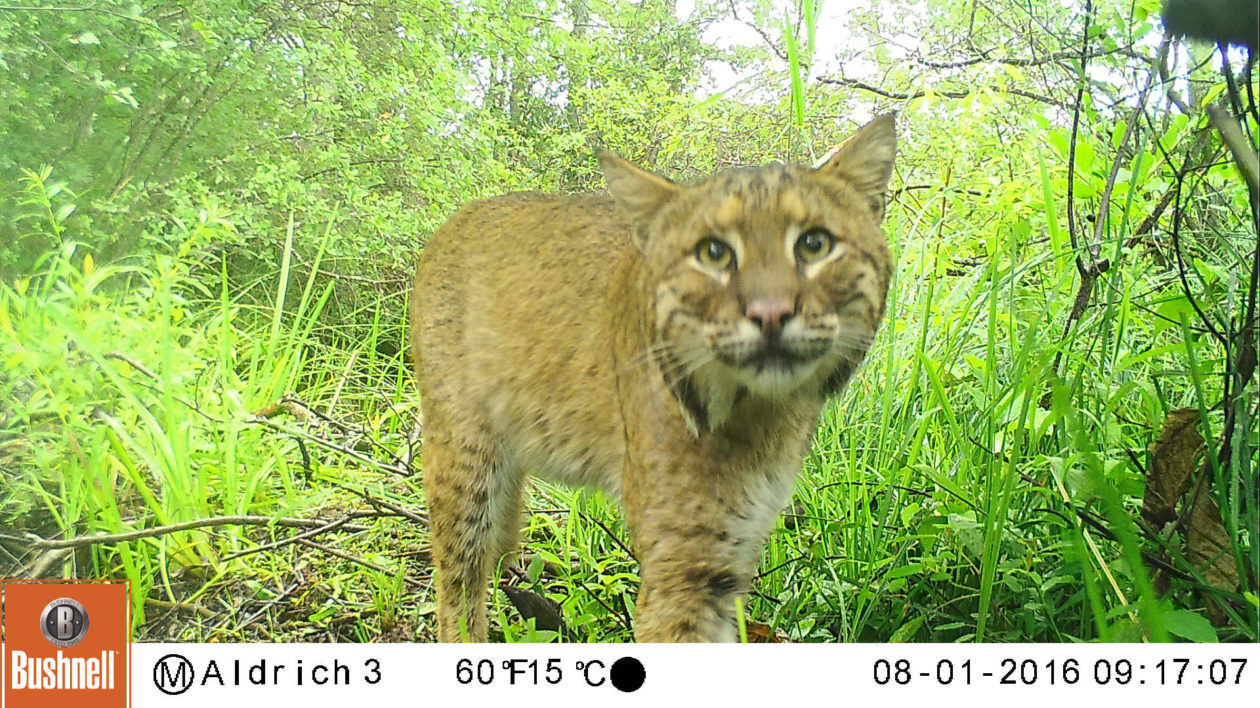
A Conservation Success
Bobcats are the most widespread wild cat in North America, found in 47 U.S. states and parts of Canada and Mexico. But as recently as 1970 they were treated by many wildlife agencies as a harmful predator species, to be killed on sight. In fact, bobcats lacked any legal protection in 40 U.S. states; they could be shot and trapped at any time of year, without limit.
With populations declining across their range, the lack of regulation slowly began to change, with most states either protecting bobcats or establishing strict hunting seasons and limits.
This is one of those instances where conservation proved uncomplicated: protect bobcats from unregulated hunting, and their populations will rebound. A 2010 survey by the U.S. Fish and Wildlife Service determined that bobcat populations had tripled since the 1980s.
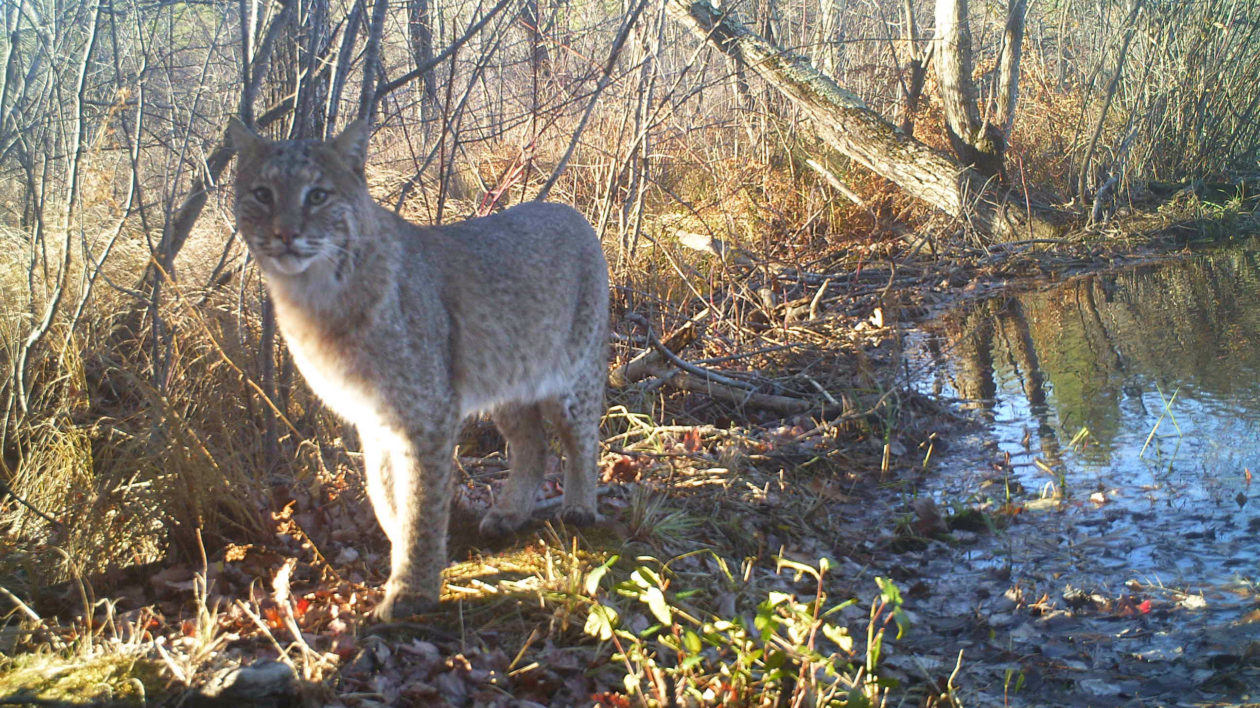
As a kid, I learned that bobcats were a wilderness species. In reality, bobcats were only found in the wilderness because it was their last refuge from persecution. As bobcat populations soared, the cats moved into farmland, suburbs and even urban parks. Bobcats are predators, but they thrive on a diet of mice, rats, birds, squirrels, rabbits and other small quarry – all of which abound in suburban areas.
This has generated predictable alarm and even hysteria among those fearful about a new predator in the neighborhood. A widely circulating Associated Press story proclaimed bobcats were “poised as next urban pest.”
There’s no evidence to support this. Bobcats are shy and reclusive animals, and they remain that way even in urban areas.
Adapting to Life in the City
Some animals seemingly become quite bold when they move in close proximity to humans: take raccoons, normally shy forest animals that will happily raid garbage cans and even enter houses through cat doors.
That doesn’t appear to be the case with bobcats. They will live in cities, but they still keep their distance from people. A study conducted in Dallas found that bobcats, even in urban areas, avoided areas that were more than 20 percent developed. So, while they were found in city limits, they primarily lived in and moved among open areas like undeveloped woodlands, parks and golf courses.
One study found that urban bobcats became even more nocturnal, shifting their activity to hours when humans were least active. In the Santa Monica Mountains, the National Park Service found that highways limited bobcat movements, essentially isolating populations.
On the surface, bobcats really are not suited for life in the city. They thrive thanks to the network of green space that is found in urban areas. For lucky wildlife viewers, they offer a glimpse of wildness in our midst.
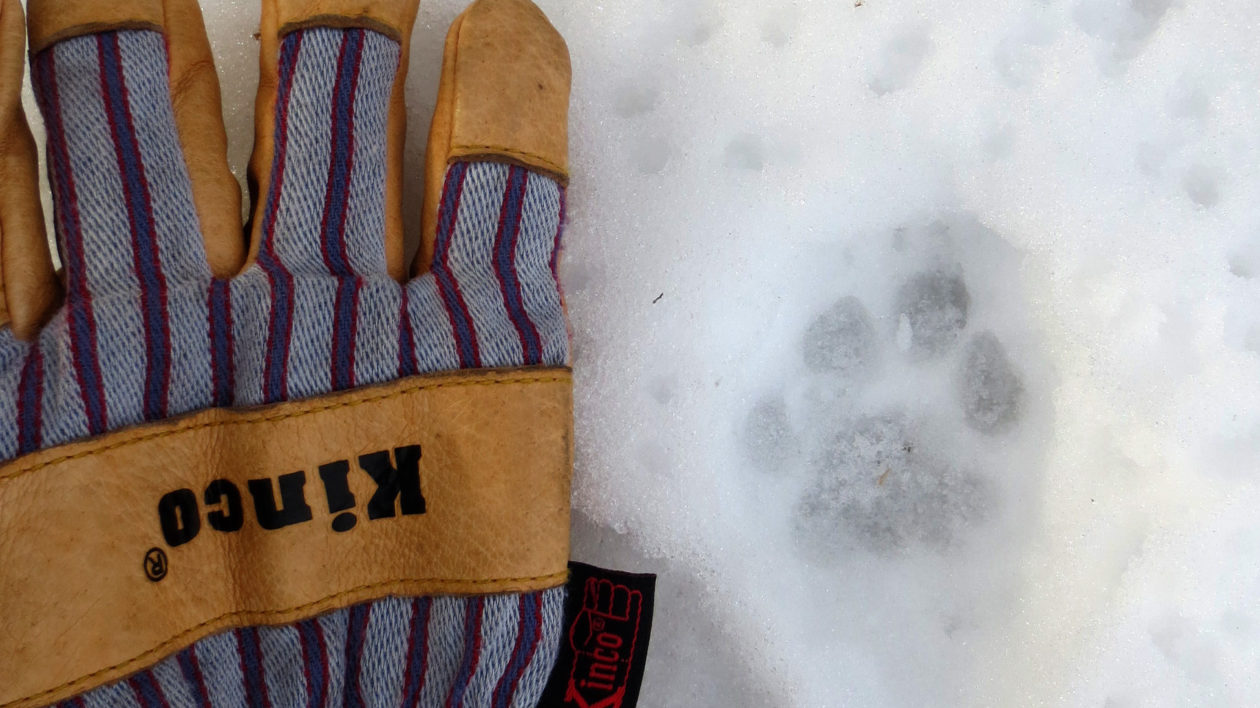
A Threat to Pets?
Whenever predators show up, people worry about these larger animals eating their pets. In the case of bobcats, this is not a realistic fear. Researchers looking at bobcat diets in the Santa Monica Mountains of Southern California failed to find any examples where bobcats ate domestic pets, despite the close proximity of the wild cats to many pet-owning households. Bobcats eat a lot of rodents; they do not want to tangle with something that can claw back.
As is so often the case, many people blame predators when their pet goes missing, even though their cat or dog was more likely hit by a car. There’s also a really simple way to avoid any potential predation: keep your pet indoors or under your supervision.
Bobcat attacks on humans are exceedingly rare, and almost always a result of the animal being rabid.
On the flip side, our backyards do pose a significant danger to bobcats. Bobcats in the Santa Monica Mountains experienced a population crash from 2001 to 2006 due to a form of mange. They contracted the mange due to suppressed immune systems, which was caused by ingesting rats and mice killed by poisons.
These rodent poisons can also impact birds of prey and other wildlife, so please find other forms of pest control.
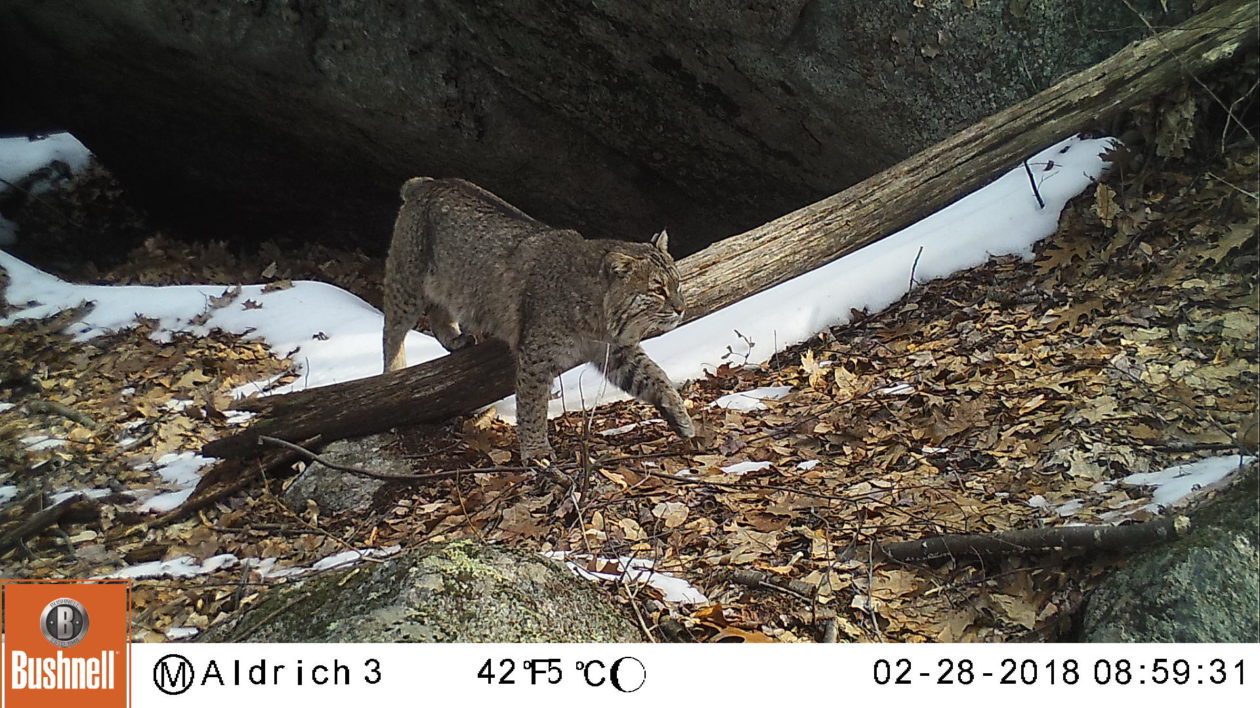
Observing Your Local Bobcats
Many wildlife agencies and researchers ask people to report bobcat sightings, so they can gain a better understanding of urban predators. A lot of the information about Dallas’s bobcats, for instance, comes from information supplied by citizen scientists.
Of course, you first have to identify the bobcat. Fortunately, these animals are pretty distinctive. They are twice the size of a house cat and have noticeably longer legs. The tufts on their ear and short tail are also diagnostic.
They are often more commonly mistaken for mountain lions, which share their range. Again, the short tail will give you the correct ID; mountain lions are not only significantly larger but have much longer tails. (Check out my guide to mammal misidentification for more details).
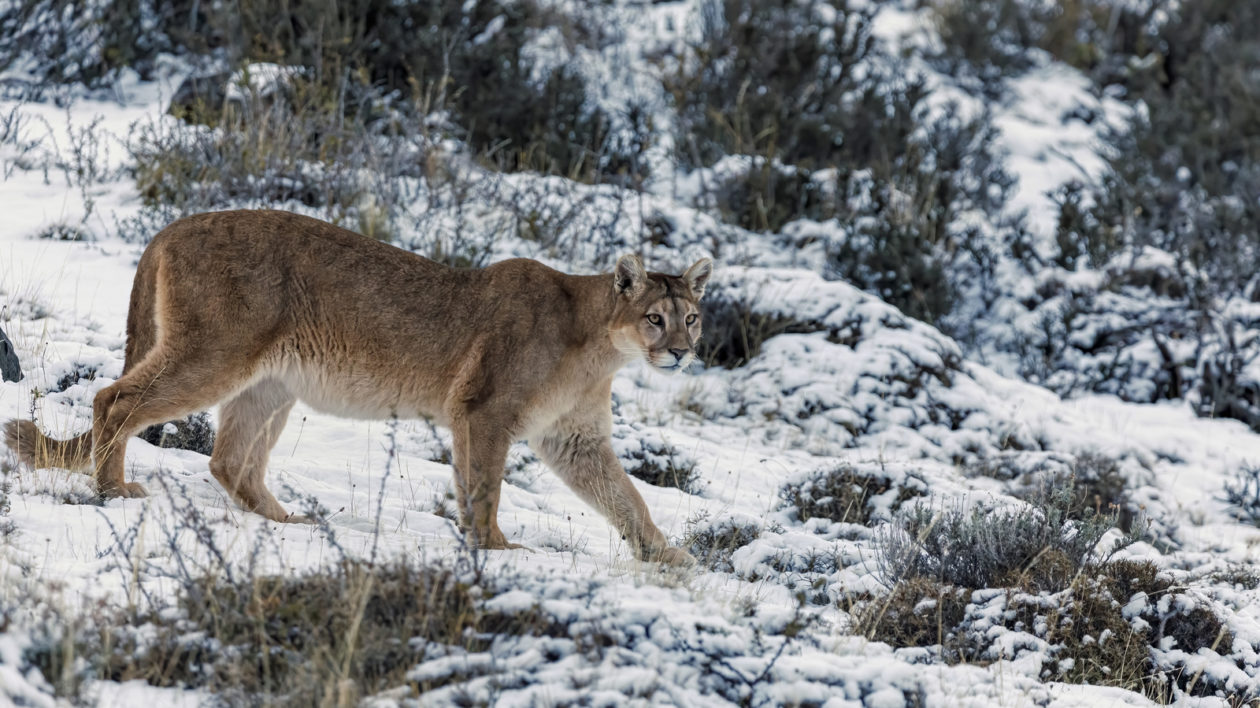
Lynx look very similar to bobcats, and a recent study found that even experienced wildlife biologists make identification errors between these two species when looking at trail camera photos. However, for the backyard naturalist, it’s pretty easy: lynx are a wilderness species. I have had acquaintances tell me they’ve seen lynx in Idaho, but biologists struggle to turn up any sign. (There hasn’t been one verified in the Greater Yellowstone Ecosystem in a decade, despite lots of surveys). Heed my top rule of wildlife identification: If in doubt, it’s the least exciting option.
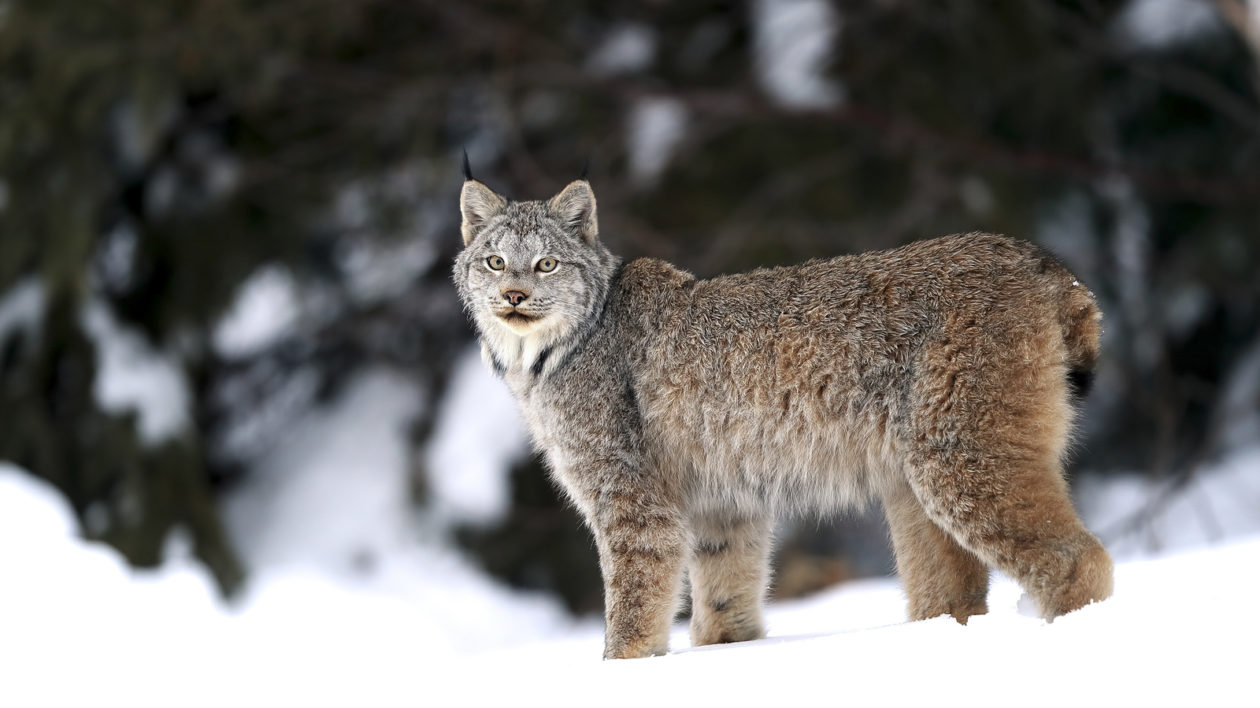
Trail cameras offer another way to get a glimpse of bobcats. My Nature Conservancy colleague Eric Aldrich has been photographing them with researcher Dallas Huggins in New Hampshire for years. Eric began by staking out carcasses with trail cameras, but eventually decided that learning wildlife habits was more satisfying.
While a few decades ago bobcats were an unusual sighting in New Hampshire, they’re now found in all the state’s counties. Eric’s Hancock Wildlife Cam offers stunning images of the cats, and has also shed new insights on their lives and habits. “It’s like earning a degree in the woods from professor Lynx rufus,” writes Aldrich.
Any backyard nature enthusiast should welcome the presence of bobcats. Unlike many animals that become urban neighbors, bobcats don’t require you to change your habits (other than not put out poison). The bobcat secretly goes about its ways, remaining as wild as it was in the deepest forest. If you’re watchful, you may be lucky enough to catch a glimpse of this elusive predator, living in our shadows.
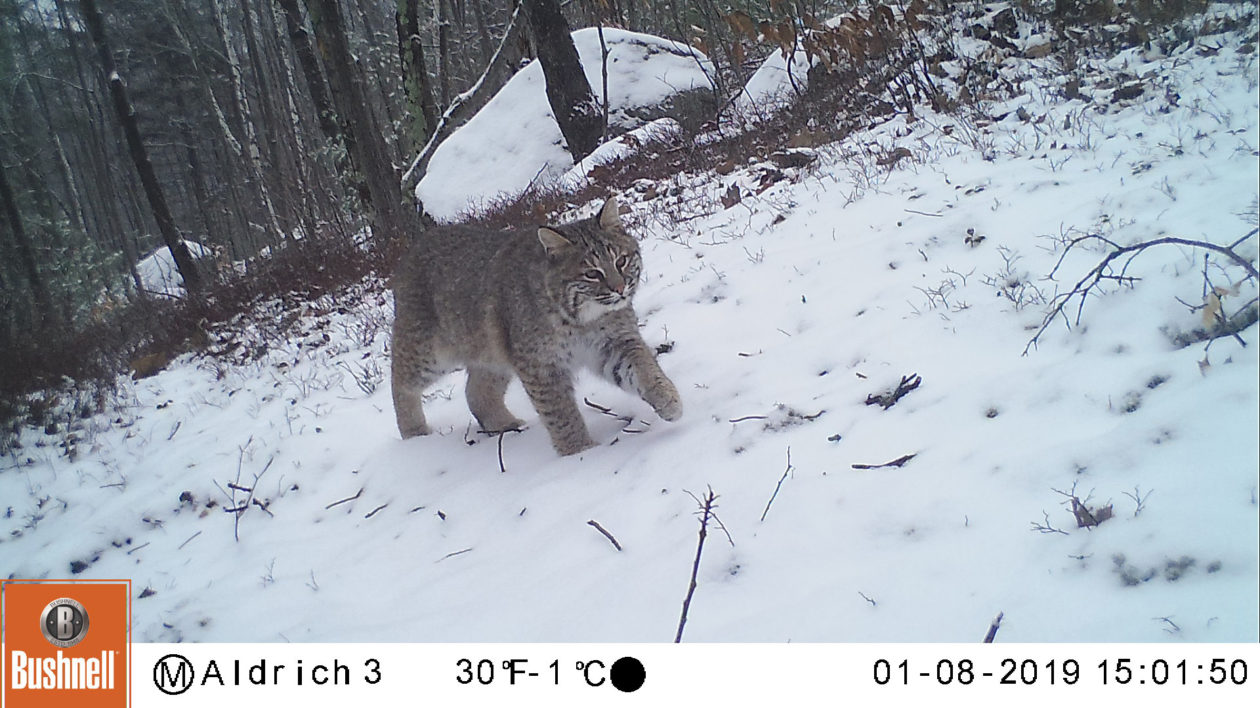
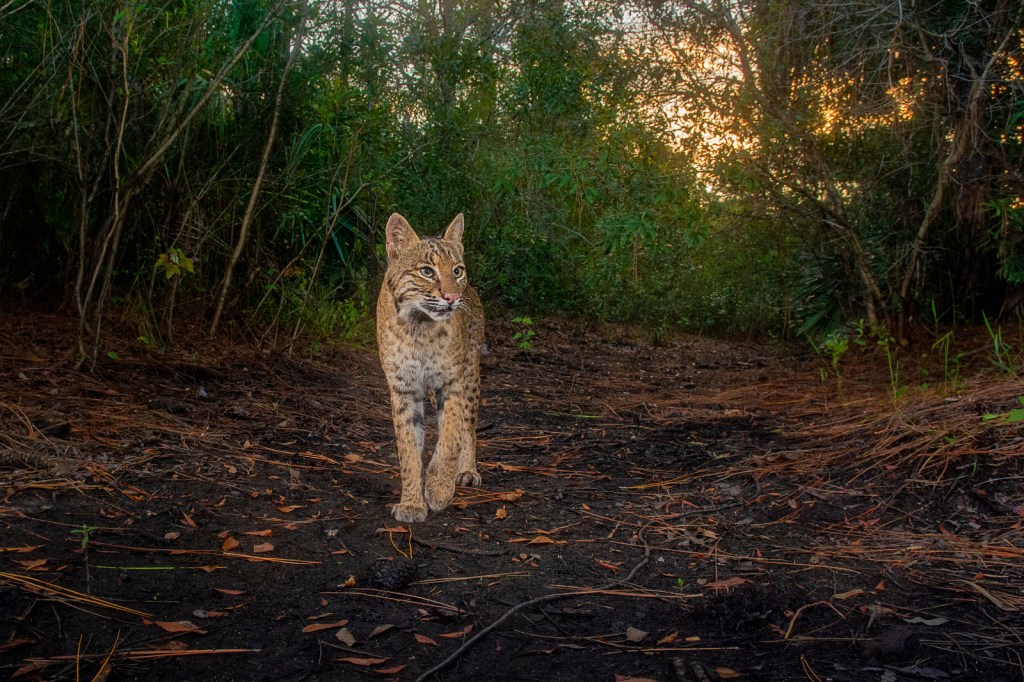



I talked to a young bobcat sitting on the side of the road . I mistook him for my tiger cat. He sat there looking at me while I talked. When I realized this was not my cat. I walked away end the bobcat crossed the road and bounded into the forest in front of my house .
We haves family of four living together in our neighborhood,there would appear to be one adult and three kittens but not sure.
This is in Boulder Colorado
They seem very relaxed around humans.I was sat in my garden reading when the mom walked past ,looked at me then wandered off.
I’ve got I think is a bobcat that has a head of almost 2 feet in diameter about the size of a black bear And a huge body over 3 feet long. He took a rooster I had outside about 12 feet from a friend of mine in my driveway. Should I call him Snagglepuss? LOL THE wild animals here in Connecticut are like a Snow White movie. The little ones chipmunks, squirrels, rabbits, and birds are friendly like the movie. A Robin wakes me up everymorning by throwing his body against my window till I go to my patio door and feed him. The black bear family the father’s face looks like my FartherInLaws after a hard day out with the kids. “Glad this day is over.” Haggard. The Hawks circle my short friend wondering if they should take him instead of trying for his small dog. LOL
Had a bobcat walk along our 6 foot cement wall. Beautiful!!!!
Ha! You have not met the bobcats in my neighborhood! They are known to go in doggy doors. Go on multi levels of homes. Check out bathrooms and tear apart kitchens. Snarl at owners coming out of bathrooms to find them in their bedrooms. They will come up to sliding glass doors and threaten indoor pets. They will tear up tools (hand and yard) just to cause a racket. And will come back the next night to do it again. They will open sealed buckets and chew on fabric straps to get into garbage cans. The solar lights coming on and off are a delight! They have ripped through chain link fencing to eat livestock. Ripping up cardboard boxes is also a joy. Esp for Mom and babies. Amazing how they can squeeze through a crack in the the car window, open a boxes of chocolates and consume it. They have also done so to frosting. Their buddies, the raccoons, have also learned to pull the pop top rings on canned food… Always leaving some for the bob cats. The bob cats never leave them chocolate though.
Yes im writing this message. I live in New Mexico and the bobcats here are common but rear in some areas. I know of a couple of individuals here that heard that bobcats were killing chickens so these 2 individuals took upon thereself and went and killed thus bobcat at a watering hole and not either one of them have license to kill bobcats or any other wild animals for that matter. So my question is what do I do to report and issue like this cause I feel it’s wrong for them 2 individuals to take upon themselves and just go on someone else’s property and kill a bobcat. I got a picture of the dead bobcat hanging for them to skin. Now the meat of the bobcat sets in a trash bag. Can you or someone help me to stop these individuals before they go kill another bobcat im very fawn of bobcats ive had one for a pet…. so im just looking for some answer here. Thank you for your time and help.
I have a mother bobcat in my yard with three babies but I also think that there are many more in the woods behind my house I counted three all on the same tree branch hanging out is that common
I just had two youngsters in my yard at the front of the house, one came up onto the deck & had a look through the door glass while I photographed it. They were young, this years litter I’m sure. I back onto what is undeveloped land. Dry scrubland dominated by oak & poison oak.Most of my 9+ acres is pretty wild & there are many critters, mice, gophers, squirrels, etc. plus many birds as one might expect. I’d like to have one of the bobcats make a home here & do its bit for the rodent population. Any suggestions as to what I might do to improve the habitat? Keep them/it happy?
Up here in Calgary Alberta Canada, bobcats are making their presence known. They have moved into the suburbs and have been seen taking small pets from yards and porches during daylight hours. I am trying to find more info about them, as some people are quite scared and I feel their boldness is a tad unusual. theories abound as to what attracts them and why they have moved in, but they definitely like neighbourhood rabbits and pets…
I have a bobcat in my backyard which I have named Dolly. Dolly had three kittens until a coyote got into the yard. She then moved them with no forwarding address. I don’t know if the coyotes got one of the kittens as I only saw two before she moved them. Dolly is in my yard numerous times a day and is very vocal. For example last night she woke me up four times . Nobody seems to understand what she is vocalizing about. I’m sure the kittens are almost weaned now so I think she might be hunting more. Of course I don’t know if she still has the kittens and if she is being vocal because she is trying to breed again. I have plenty of video. Would love to know what’s going on.
She comes into my garden and lays around in the same spot every day.
Michael
I’m in OK. Shawnee Ok. To be exact. In my back yard i seen a Bob Cat… Came from the tall grasses right into my back yard.. I live on a busy St. and I was so amazed to see this beautiful large cat just walk out of the tall geasses and into my yard. It stopped and looked at me then turned and walked into the woods right behind my house..( I was inside my home. ) This cat was so beautiful just to look at. I know we have wild turkeys and deer, but this was magnificent. If it comes back what do I do? I don’t want it killed.
We’re in Scottsdale we have two cubs and a mother that birthed in our backyard. They are currently sleeping on our back lawn. It’s an incredible sight. They’ve been here for just over a week.
my cats and I hissed at an ugly cat that was sitting on the air conditioner peering in our window , about a month ago. then about two weeks ago it was hanging out in a spot my cats like , that is attached to the roof. I actually thought it was my cat, but as first the little cat , then the dog marched through the door, i noticed my larger cat come strolling by. It was the wild thing. It was not afraid of me at all and just lounged there as I walked by. my German Shepherd ignored it completely. This is a dog that flips and barks at all dogs and squirrels, and yet it ignored the predator in our midst??? Last week my cat Gilly decided she wanted to stay out and I usually get her to come in but she has had ear mites and I had been putting drops in her ears so she was not happy with me. I fell asleep but was woken when the dog was barking . I got dressed and knew the way she was sweeping the ground something had been there. my cat was gone! I knew that . I thought a fox or coyote , but this was a cat that would attack dogs if they went after her. Now Im pretty sure the ugly cat was a bobcat. And two nights later my cat had tried to return home. I heard a cat scream so the dog and i went out and looked all over the paddock. but she was barking at the tree. We went in and about two hours later , a cat scream and we went back out . It had escaped over the fence with my Gilly. never to be seen again. Now Im afraid when i go out at night, im on 10 acres all fenced but it has upset me. This thing is not afraid of me or my dog.
I have a Bobcats family living in my backyard right now. Mom and three kittens. They are very entertaining and are growing fast. We are guessing they are 2 to 2 1/2 weeks old. They are still nursing. I just had a situation that another bobcat came into the yard. I thought that was a no no. The two adult bobcats did not square off and didn’t Threaten the kittens. The kittens are now playing in the garden and the two adults left the yard together. Is this somewhat normal?
I came across your highly informative piece after hearing our bird feeder hit the ground after dark tonight here by a southern Wisconsin lake. It was the second such attack in a week and would have required a wily skill set beyond the usual suspect chip monk, and we’ve seen no spring hungry bear. But we have seen a bobcat about!